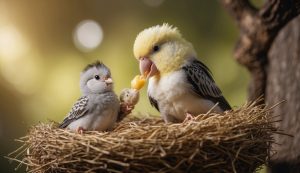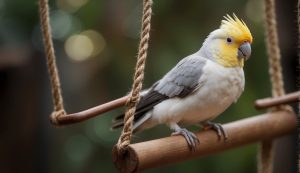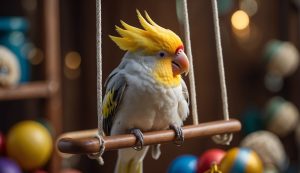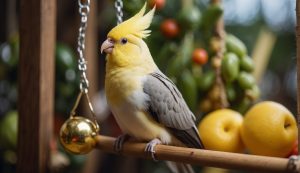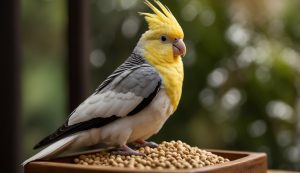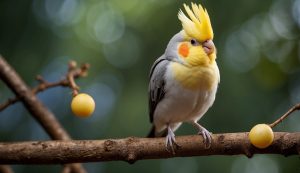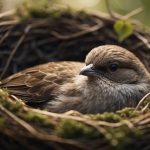Do Cockatiels Take Care of Their Young? Understanding Parental Behavior in Pet Birds

Cockatiels, also known as Nymphicus hollandicus, are affectionate pet birds that have captivated the hearts of bird enthusiasts around the world with their sociable nature and charismatic personalities.
In the wild and as pets, these charming creatures have demonstrated a strong sense of parental care, often seen tending to their young with diligence and attentiveness. Their behavior raises an interesting question: do cockatiels take care of their young effectively?
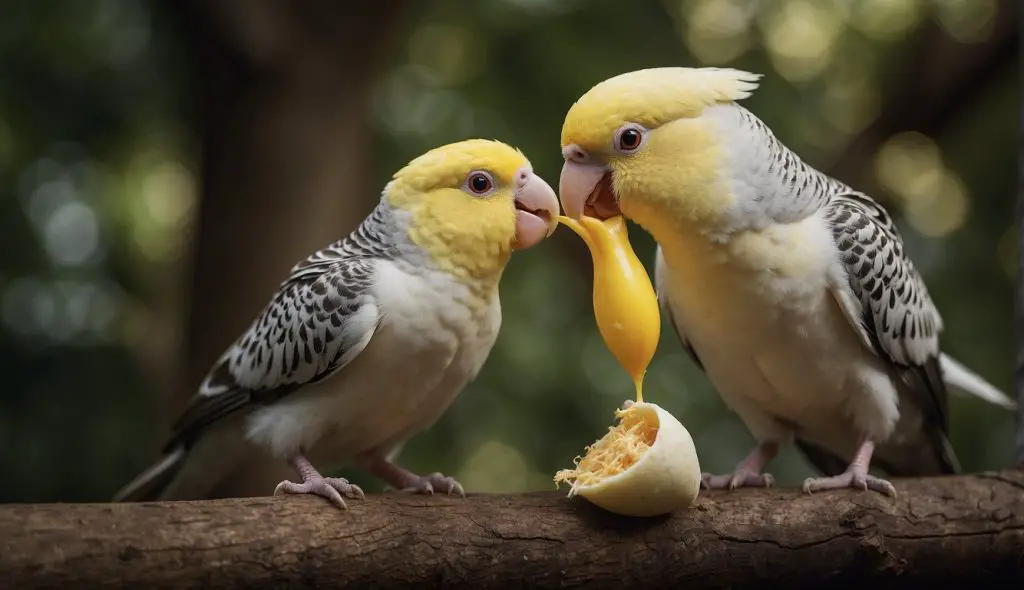
Observing cockatiels as they engage with their chicks provides a glimpse into their parenting style. These birds are naturally inclined to rear their offspring, starting from incubation and continuing until the chicks are ready to leave the nest.
It’s a process that involves both male and female cockatiels, where each parent plays specific roles to ensure the successful growth and development of their young.
Proper socialization plays a crucial role in the overall welfare of cockatiel chicks, which, in captivity, can be bolstered by responsible pet owners through gentle handling and interaction.
Key Points
- Cockatiels display attentive parental care which ensures the survival and well-being of their chicks.
- The socialization of cockatiel chicks is essential for their proper development and integration with humans and other birds.
- Responsible pet ownership enriches the lives of cockatiels, enhancing their affectionate characteristics and health.
Table of Contents
Understanding Cockatiel Parenting Behavior
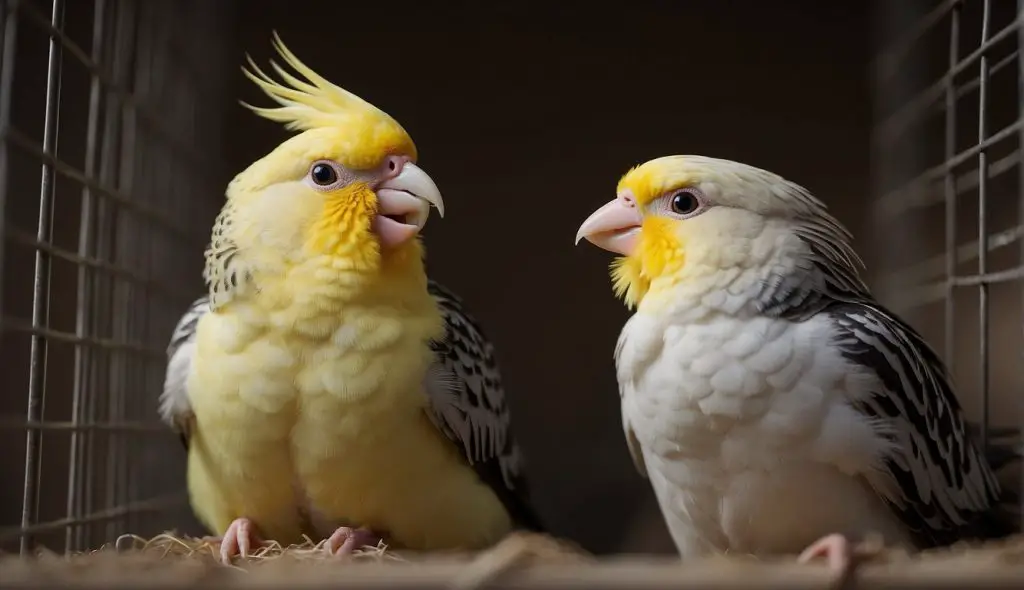
In exploring the parenting behavior of cockatiels, I’ll share what I’ve learned about their unique approach to mating, nesting, and raising their young.
Mating and Breeding Habits
Cockatiels have a fascinating breeding behavior that fluctuates with the seasons. Female cockatiels lay a clutch of typically 4 to 7 eggs, after a period of courtship with a male cockatiel that often includes head bobbing, feather fluffing, and singing. The time it takes for eggs to be laid after mating can vary, but generally, the first egg is laid within a couple of weeks. Cockatiels are capable of mating year-round, but they commonly breed from spring to early autumn. This aligns with the increased availability of food that is necessary for rearing their young.
Nest Building and Egg Incubation
Once mating has concluded, both male and female cockatiels participate in the nest building process. They prepare a nesting site by gathering materials suitable for cushioning and insulating the upcoming clutch. The female then takes the lead when it comes to incubating the eggs, spending most of her time warming them. During this phase, the male cockatiel provides food and becomes somewhat of a sentinel, protecting the nest. The eggs typically hatch after 18 to 22 days of incubation.
Rearing and Feeding of Baby Cockatiels
After the eggs hatch, cockatiel parents are kept busy feeding their baby cockatiels, also known as chicks. Cockatiel parents regurgitate food to feed their chicks, ensuring each chick gets adequate nutrition for healthy growth. This process continues until the chicks are ready to fledge, which is usually around 4 to 5 weeks old. At that point, the chicks start to learn how to forage for food independently. Throughout this period, the cockatiel parents teach the necessary skills for survival outside of the nest, and socialization starts with the integration into the flock.
Key Aspects of Cockatiel Care and Health
When I consider the well-being of my cockatiel, I focus heavily on their diet, habitat, and prompt medical attention when necessary, as these are crucial for their health and happiness.
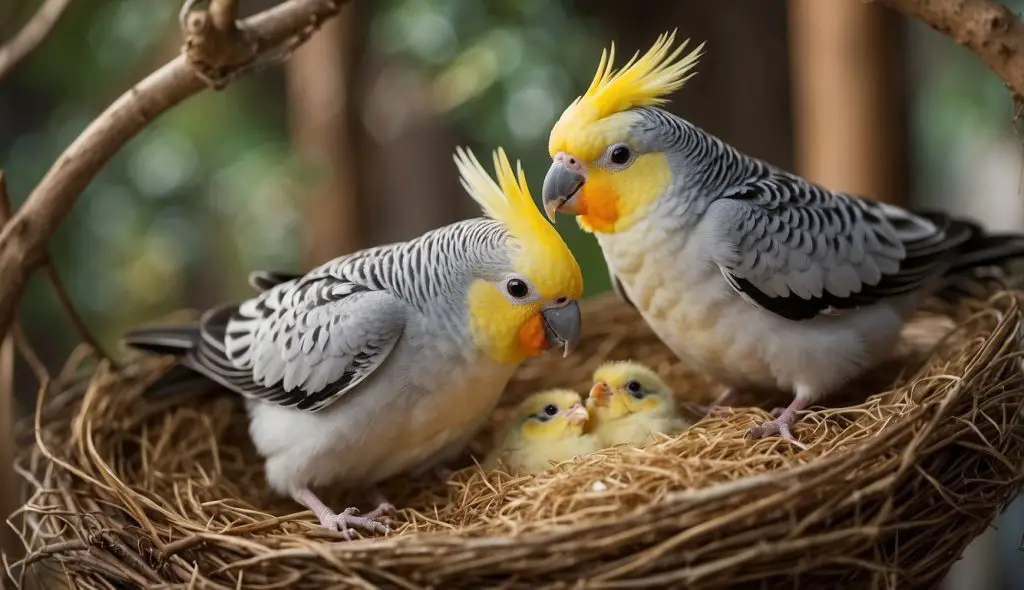
Dietary Needs and Nutrition
Cockatiels require a balanced diet rich in nutrients to thrive. My experience has shown me that it’s essential to provide a variety of seeds, pellets, vegetables, and fruits to meet all their dietary needs. I always ensure that their daily diet consists of:
- High-quality pellets: These should make up about 60-70% of their diet.
- Seeds: A small portion of their diet, seeds are often high in fat.
- Fresh vegetables and fruits: These typically make up around 20-25% of their daily intake. I give them fresh options like broccoli, carrots, and apples, avoiding avocados, which are toxic to them.
- Water: Fresh, clean water should be available at all times.
It’s crucial to monitor my cockatiel’s food intake and ensure they are getting a balanced mix. Sometimes I have to adjust the amounts to prevent obesity and fatty liver disease, which are common health issues in these birds.
Cage Setup and Maintenance
The cage where my cockatiel spends its time requires regular cleaning and maintenance to keep the environment hygienic and safe. I follow these guidelines:
- Size: The cage should be spacious enough for them to flap their wings and move around freely. Ideally, it’s at least 20 inches long, 20 inches wide, and 30 inches high.
- Placement: I keep the cage in a well-lit area away from drafts and windows.
- Cleanliness: Regular cleaning involves wiping down surfaces and changing out the lining material at least once a week.
- Enrichment: I also provide various perches and toys to keep my cockatiel engaged and active.
Common Health Issues and Veterinary Care
Being proactive in recognizing signs of illness can be life-saving for a pet cockatiel. I stay vigilant for symptoms such as lethargy, change in droppings, and fluffed feathers. Common health problems include:
- Respiratory Infections: Difficulty breathing or discharge from the nostrils.
- Fatty Liver Disease: Often a result of a high-fat diet. Changing to a balanced diet is an essential preventive measure.
- Feather Plucking: Can be a sign of stress, boredom, or illness.
For these reasons, I keep a close relationship with a veterinarian who is experienced in avian health to ensure my cockatiel receives regular check-ups and prompt treatment if any problems arise. Regular vet visits help me catch potential health issues early on, ensuring my cockatiel maintains its vibrant and affectionate demeanor.
Cockatiel Interaction and Socialization
In my experience with cockatiels, active interaction and consistent socialization are crucial for their well-being. These playful birds need a variety of engaging activities to stay healthy and happy.
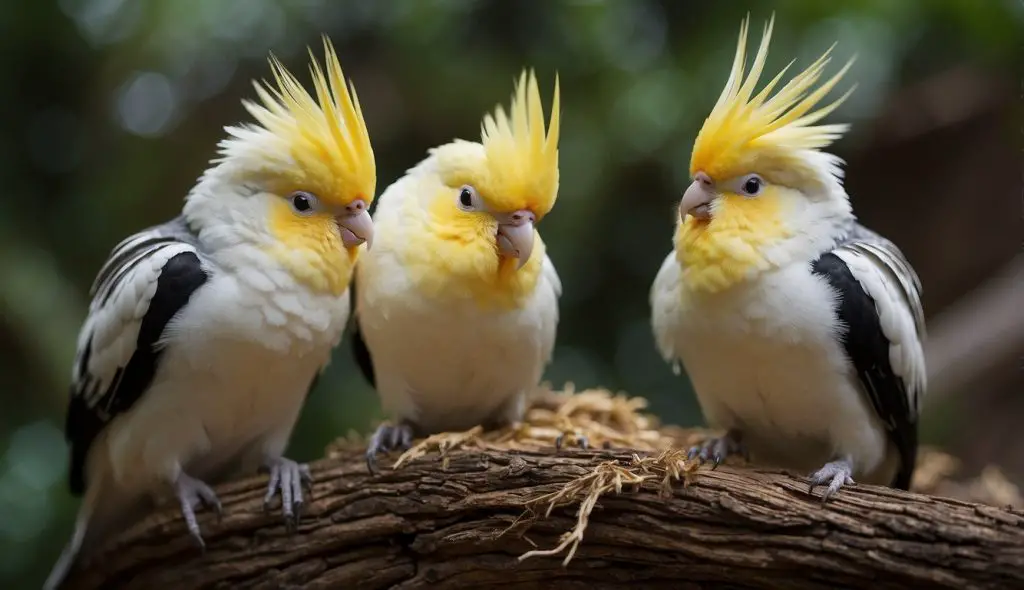
Toys, Perches, and Enrichment
I ensure my cockatiel’s cage is filled with a range of toys that provide mental stimulation and physical exercise. Here’s what I typically include:
- Toys: Ropes, bells, and shreddable items are a must for keeping them entertained.
- Perches: Natural wood perches of varying diameters help maintain healthy feet.
Toys not only prevent boredom but also encourage problem-solving. I observe that perches positioned at different levels enable my cockatiel to climb and explore, offering both exercise and a sense of environmental enrichment.
Grooming and Exercise
Maintaining my cockatiel’s physical health involves regular grooming and ample opportunity for exercise. Here’s how I approach it:
- Grooming: I gently mist my bird or allow it a shallow water bath for feather care.
- Exercise: Free flight time in a safe, enclosed space is essential for proper muscle development.
I make sure the space is secure and free of hazards before letting my cockatiel fly. This not only aids in physical health but also seems to boost their confidence and trust in me.
Training, Tricks, and Vocalization
I’ve spent considerable time training my cockatiel, which has been rewarding for us both. The process entails:
- Training: Step-up commands and simple tricks using positive reinforcement build a strong bond.
- Vocalization: Encouraging vocal interactions like whistling tunes or mimicking sounds.
Through consistent training sessions, my cockatiel has learned to follow commands and even perform a few tricks. Vocalization work helps us communicate, and it’s clear that these exercises are both entertaining and mentally stimulating for my feathered companion.
Adopting and Supporting a Cockatiel in Your Home
Welcoming a cockatiel into my home has been one of the most enriching experiences. I’ve prepared a cozy space and committed to a fulfilling long-term relationship with my feathered companion.
Choosing Your New Pet
When I decided to adopt a cockatiel, I considered various factors like size, cage requirements, and the bird’s social needs. Here’s what I kept in mind:
- Size: A cockatiel is a small to medium-sized parrot. I made sure my living space could accommodate a cage of suitable size.
- Cage: I chose a cage at least 24″x24″x24″, allowing enough room for stretching and flapping wings.
- Presence of Another Cockatiel: Since these birds can experience loneliness, I thought about adopting a second cockatiel to provide company.
- History and Lifespan: I learned about the bird’s history at the shelter to understand its personality. Cockatiels have a long lifespan, often living into their 20s, so I prepared for a long-term commitment.
- Adoption: I adopted from a reputable shelter to give a forever home to a bird in need.
The Adjustment Period and Long-Term Care
Adopting a cockatiel meant guiding my new friend through the adjustment period and providing care thereafter. Here are my key practices:
- Adjustment Period: Patience was essential while my cockatiel got comfortable in the new environment. I created a quiet space and slowly introduced myself to avoid overwhelming my pet.
- Cage: I kept the cage clean, well-lit, and away from drafts to make my cockatiel’s home safe and comfortable.
- Social Interaction: Regular, gentle social interaction helped reduce stress during the adjustment. If I wasn’t available, I considered the presence of a second cockatiel to keep my bird entertained.
- Longevity: Understanding that my commitment to the cockatiel could last over 20 years, I planned for its care, including vet visits and a stable environment in my home.
Frequently Asked Questions
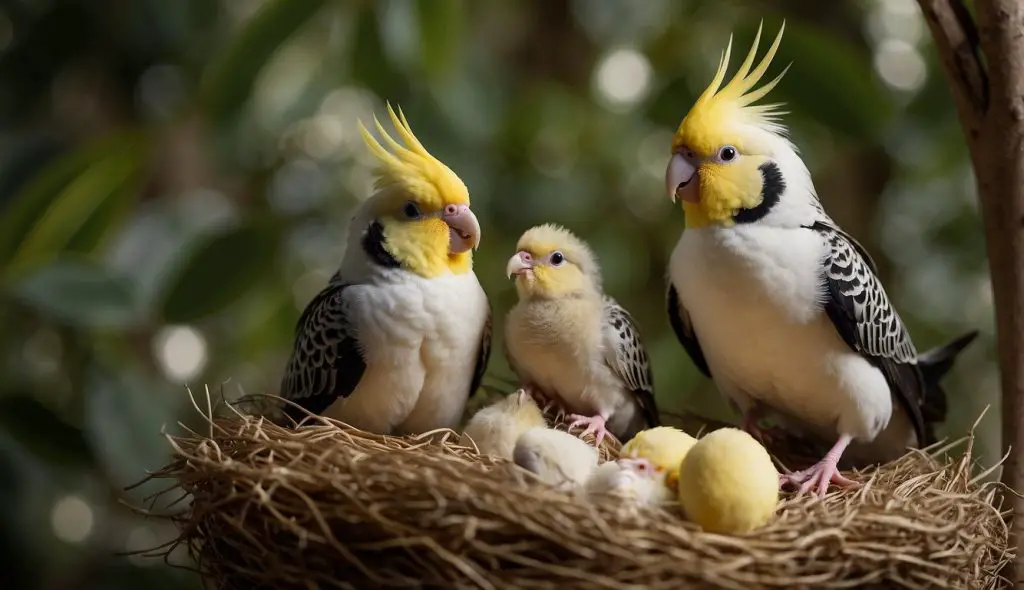
In caring for baby cockatiels, my experience has shown me the importance of understanding their developmental stages and needs.
These FAQs reflect some of the most common inquiries I get on the topic.
How long do parents typically take care of baby cockatiels before they become independent?
Parents usually care for their chicks for about 6 to 8 weeks after hatching. During this time, they feed and protect the fledglings until they’re ready to venture on their own.
At what age do baby cockatiels start to eat solid food by themselves?
Baby cockatiels typically begin to eat solid food at about 4 weeks old. I usually introduce a mix of seeds and pellets gradually at this stage.
What should I feed a baby cockatiel to ensure proper growth?
I provide a balanced diet of specialized cockatiel seed mix, pellets, and fresh fruits and vegetables to ensure proper growth and nutrition for baby cockatiels.
How can I ensure a baby cockatiel stays warm and comfortable in its environment?
I maintain a warm environment, ideally between 75-80°F with low drafts, and I use a nest box with soft bedding to keep baby cockatiels cozy.
What are the signs that a baby cockatiel is ready to leave its mother’s care?
A baby cockatiel is ready to leave its mother when it can eat independently, has a full set of feathers, and can fly confidently, which is generally around 8 weeks old.
How often should baby cockatiels be handled and is there a recommended method?
I handle baby cockatiels for a few minutes several times a day to acclimatize them to human interaction. I support their bodies gently when picking them up to build trust.

